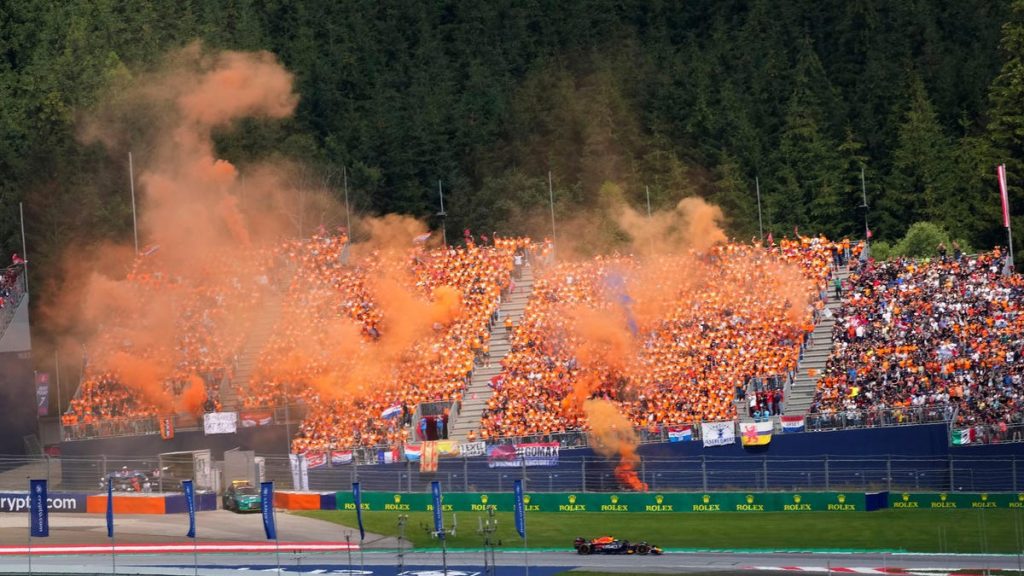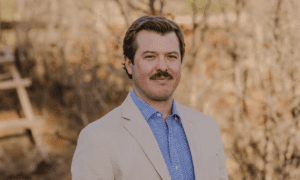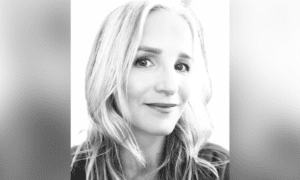Harassment at the Formula 1 Austrian Grand Prix Isn't New, Unfortunately

Formula 1 fans cheer on Max Verstappen at the 2022 Austrian Grand Prix.Photo: Matthias Schrader (AP)
Over the weekend, Formula 1 fans attending the Austrian Grand Prix began to report a truly concerning phenomenon: Women, people of color, and members of the LGBTQ+ community were facing rampant harassment from other fans in the form of catcalling, racial abuse, and more. This has been a problem at tracks around the world since motorsport first began, but many fans were particularly disturbed that this could still be happening in 2022. And as someone who camped at Austria, it can be a terrifying experience if you don’t look like the stereotypical motorsport fan.
One Twitter user named Melanie compiled many of the concerning tweets into a single thread. As her post gained traction, several of the Twitter users quoted in the thread either deleted their accounts, deleted their tweets, or locked their Twitter accounts — but some posts still stand.
“the behavior has been… disappointing. my expectations were low but holy cow,” one user wrote, punctuation intact. “racist, homophobic slurs, cat calling, inappropriate talking and touching the list goes on.”
Another user reported homophobic abuse while on a pit walk, saying she felt that she felt scared. Another posted screenshots sharing the racial abuse one Lewis Hamilton fan faced. A user named Thijs confirmed that one grandstand dedicated to Max Verstappen fans was filled with rampant sexual harassment that included men singing the phrase “daar moet een piemel in,” which translates to “there needs to be a dick in it” to any woman who passed by in 2021. And another fan confirmed that similar harassment was happening in 2022.
While digging into this phenomenon on social media, I saw quite a few F1 fans trying to pinpoint this harassment solely on the presence of Dutch fans traveling to the event to support Max Verstappen, but I can tell you from experience that this isn’t true. This has been happening in Austria — and at other venues — before Verstappen had become a fan favorite driver.
I attended the Austrian Grand Prix back in 2015, where I camped with a group of people who all identified as women, and the problem was evident even back then. While I had a wonderful time with my friends, these reports on social media made me look back at my experiences and recall some of the more negative encounters I had that I mostly tried to ignore.
The biggest one? During our first day there, I knew that going to the bathroom alone was probably going to be a bad call. As I took the short hike from our tent to the bathroom, groups of men would holler at me as I passed by. Now, I had no idea what they were saying, since my grasp of the German language leaves a lot to be desired, so it was a little easier for me to ignore it. But I started going to the bathroom in pairs, just in case.
I can really only describe the atmosphere at that race as the kind of locker room that folks like to bring up any time someone gets offended by a harsh word. It was a largely male crowd. I lost track of how many buck-naked dudes I saw, either wandering from the shower back to their campsite or hanging out in a makeshift hot tub. I lost track of how many times I was propositioned in some form or fashion — and I’m only counting the times someone propositioned me in English — to, say, take off my clothes and join them in their hot tub or to expose myself or to just give them a little kiss. I distinctly remember one of my friends lamenting the fact that we didn’t pack a padlock, because I know we’d have felt a lot safer locking ourselves in the tent when we went to sleep.
At the time, I didn’t exactly know what to do about all that. I’d just turned 19. It was my first time traveling abroad. It was also one of the first times where I was so wholly outnumbered by people who were harassing me. It was one thing to be catcalled on the street, where I could dip into a store or rely on the presence of bystanders to protect me. It was another to walk through a dark campground after having a few drinks, knowing that the people around me could easily get away with just about anything.
I just compartmentalized it. I put on a smile and politely declined any advances. I stuck close to my group. What else was I going to do? I was young enough that I just told myself this is what happens when you’re a girl in a male-dominated environment, and I decided to just deal with it because I didn’t have the power to do anything about it.
(I also want to note that the experience I had in Austria was fairly unique to that event. I camped at Silverstone that same year and found a greater number of women and a smaller number of outright jeering men. Similarly, no one was quite as outright rude to me in Austin, Montreal, or Miami. There were still people who catcalled or were outright unkind in other ways, but in my experience, those experiences were more isolated and not representative of a large number of people who attended those races. But that being said, others could have had a significantly different experience.)
Now, though, I have a voice and can articulate those experiences — and it’s deeply disheartening to know that the same harassment is still happening. Disheartening, but not surprising, because Formula 1 is still an environment that sees women, members of the LGBTQ+ community, people of color, and other minorities as outliers. That bias is built into the history of the sport.
But I was deeply moved to see so many people mobilizing after fans started sharing their stories. Sarah Levenson of the GridClique Instagram page put together a group chat for women at the Austrian GP, which provided a sense of community and safety for people who were otherwise feeling alone. Other people like Matt Amys directed fans to find first aid areas, where circuit staff were prepared to provide care and safety to fans in need. Toni Cowan-Brown continued to push for the growth of solo fan hospitality areas and other safe spaces for women during a Grand Prix. And Formula 1 itself, along with other members of the media, condemned the harassment (though there’s still more work to be done than just making a statement).
The culture of motorsport has slowly been changing for the past several years, but there’s still so far left to go to create a hospitable atmosphere for race fans from all corners of world and all walks of life — and it starts with condemning and preventing this kind of behavior at the race track.






